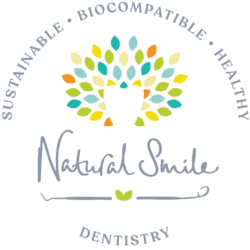UPDATE: Unfortunately the company that run CEREZEN are no longer trading, and as a result we are no longer able to offer the treatment, we think this is a shame since those of our patient who tried it found it to be a useful tool for helping to manage the effects of clenching and grinding.
If you are suffering from the effects of clenching and grinding please don’t give up it’s really important you seek help. Call us or sign up to become a new patient and we can discuss the range of treatments available to you. In the meantime we find that for most patients clenching and grinding is a symptom of stress. Whatever you can do to reduce the level of stress in your life can help with this issue, we recommend yoga, breathing techniques for relaxation and practicing mindfulness to help awareness of when you are clenching and grinding.
Good news for all of you who suffer from jaw joint pain, or the symptoms of clenching and grinding- we are now able to offer a new treatment!
The jaw joint is often referred to as the Temporomandibular joint or (TMJ for short) and problems related to its dysfuncti on can cause all sorts of issues, from headaches and pain in the joint to clenching and grinding, in turn leading to tooth wear and even fractured and chipped teeth.
on can cause all sorts of issues, from headaches and pain in the joint to clenching and grinding, in turn leading to tooth wear and even fractured and chipped teeth.
Traditionally we have prescribed bite guards to deal with the symptoms of the clenching and grinding, but now, as the part of a more wide ranging approach in the treatment of temporomandibular jaw joint disorders, we are able to offer the Cerezen treatment.
The Cerezen device is a small custom-fitted insert (constructed from the same material used in hearing aids) that is designed to be worn in the ear canal. It works by making you aware of when you are clenching and/or grinding. It does this because the device is designed to be in alignment with your ear canal when your jaw is  slightly open. If you were to clench or grind your teeth, the Cerezen device will make you aware of it because it will feel out of alignment, it doesn’t hurt it just makes you think, they call it “cognitive awareness”. It doesn’t actually interact with your joint, stop it functioning or affect it in anyway negatively.
slightly open. If you were to clench or grind your teeth, the Cerezen device will make you aware of it because it will feel out of alignment, it doesn’t hurt it just makes you think, they call it “cognitive awareness”. It doesn’t actually interact with your joint, stop it functioning or affect it in anyway negatively.
Clinical trials of the device have shown that patients report a significant reduction in pain associated with TMJ disorder. We also have our own direct experience of the Cerezen device here as Michelle our therapist has been using it for the last 12 months and has found that it completely removed her TMJ related pain, and alleviated the symptoms of her clenching and grinding. We are really excited about the potential of this device to help alleviate the many different symptoms of TMJ dysfunction, something we are increasingly seeing in our patients.

The benefits of the Cerezen device over a bite guard are considerable, but most importantly you can wear the device 24 hours a day 7 days a week (there may be a short period of adjustment for the ear prior to being able to wear them all the time) without any loss of functionality. Since lots of patients are experiencing the symptoms of TMJ dysfunction (including grinding and clenching), during the day this is significant as wearing bite guards during the day is impossible for some jobs and inconvenient in most other cases. Cerezen extends the period of relief from the symptoms to all day. It does not interfere with eating, drinking, hearing or talking, and it is not really visible at all unless you were looking for it.
There is no doubt that Cerezen is a really exciting development but there is even more good news for the suffers of TMJ dysfunction, Cerezen will be just part of the co-ordinated approach to the management of this increasingly common condition, lookout soon of news on Orofacial Myofunctional Therapy, something Michelle has recently been to the Coulson Institute of Orofacial Myology in Denver, to study. Her initial results are proving to be extremely encouraging so far, and we will keep you up to date in the coming months!

